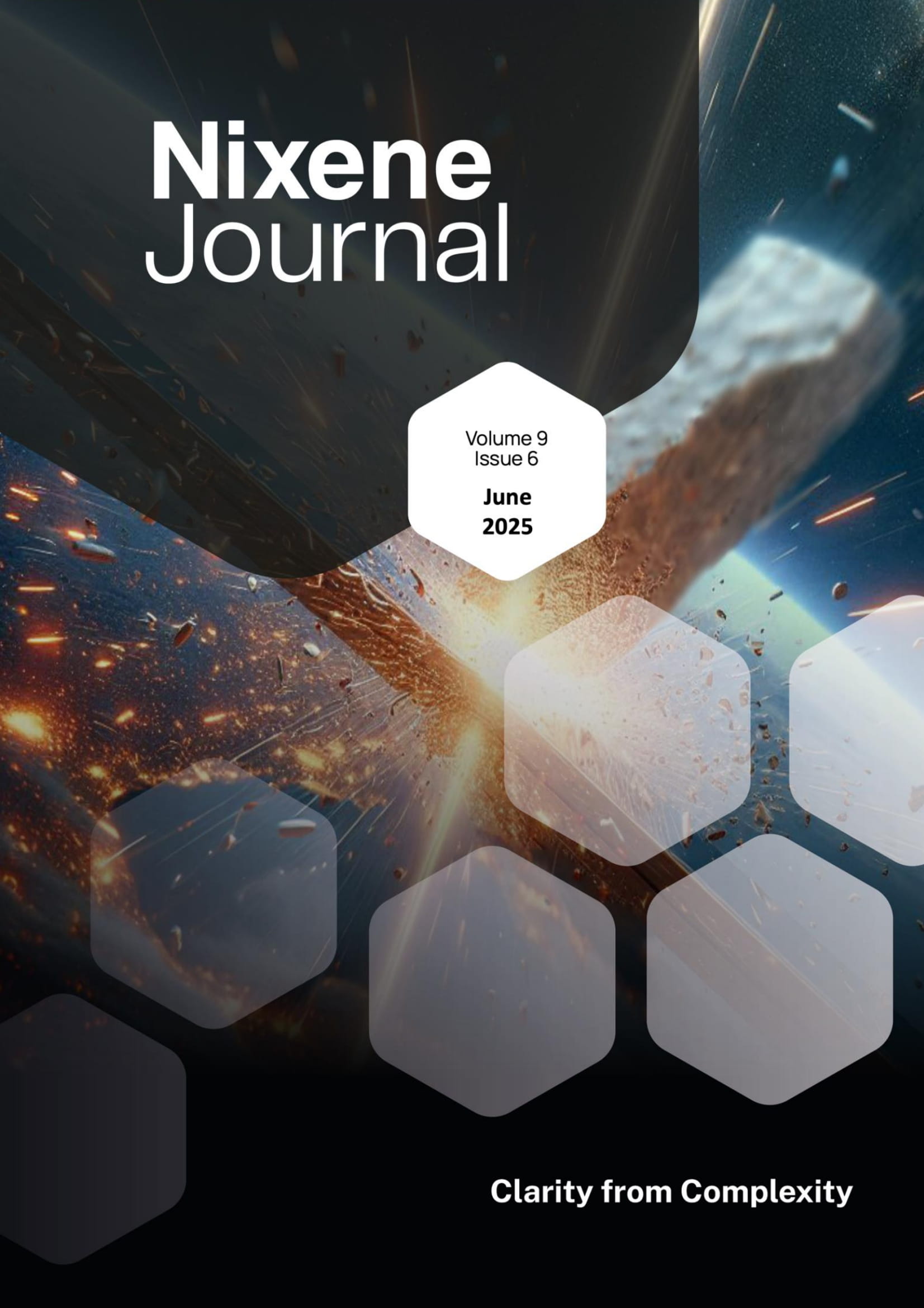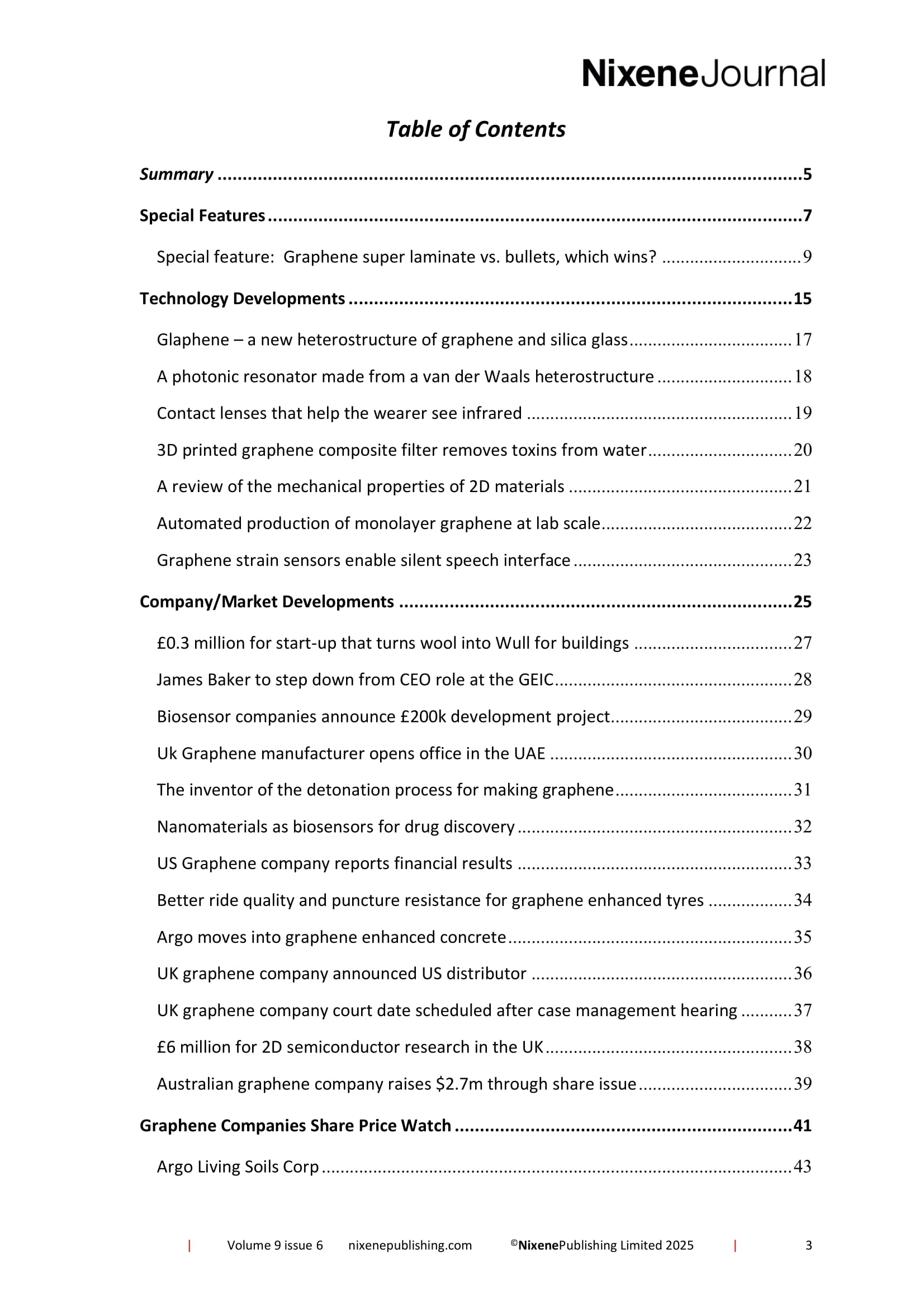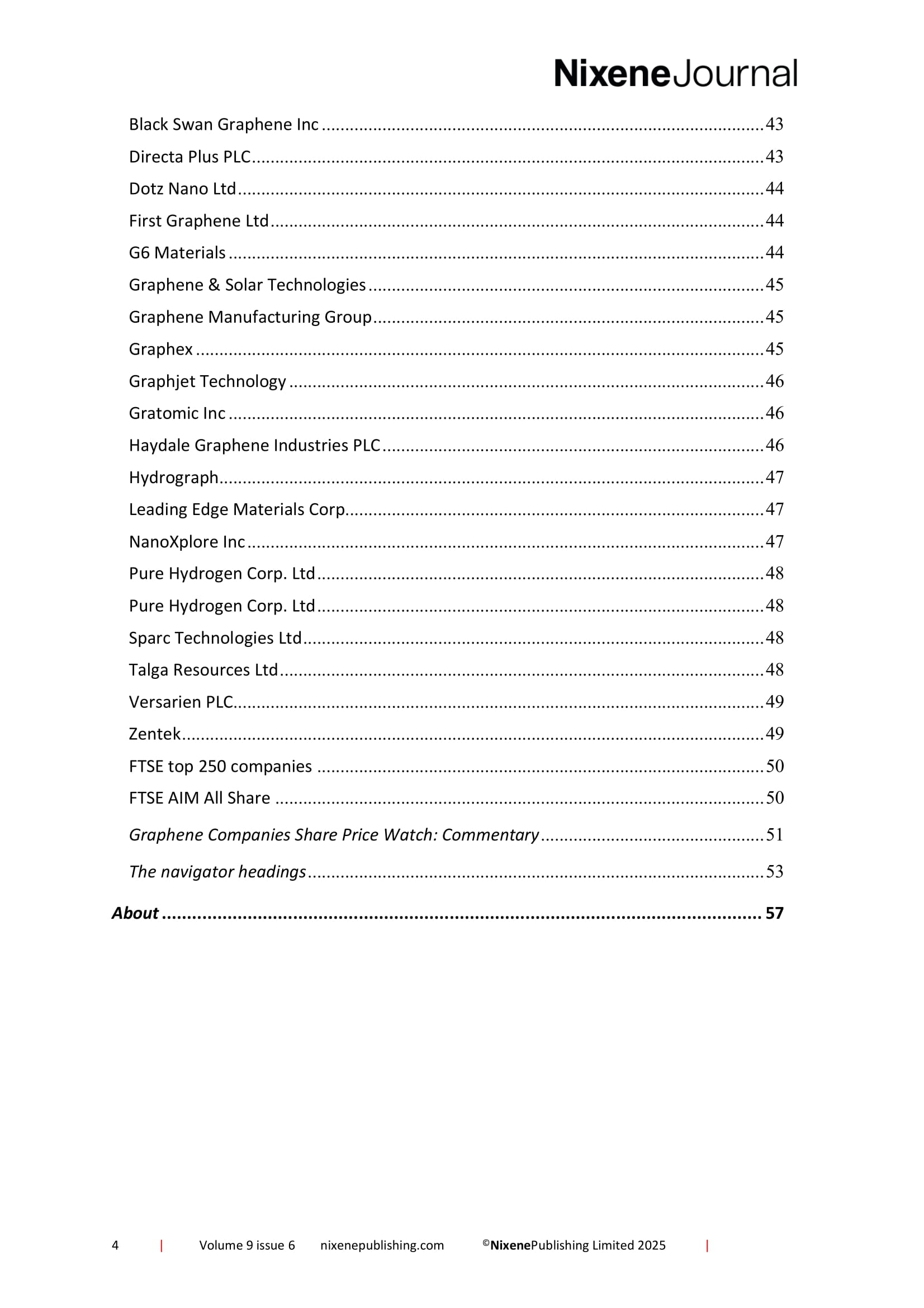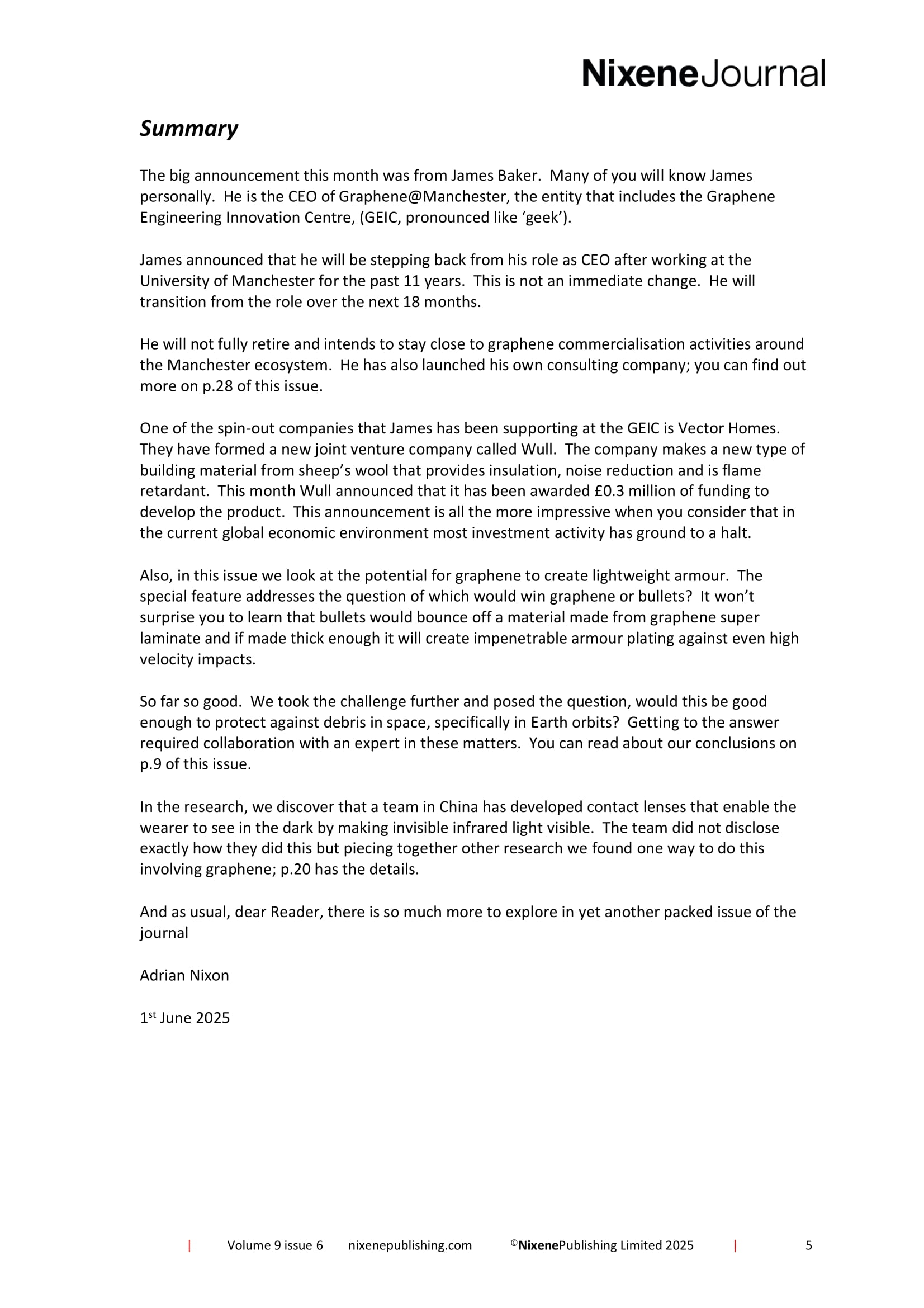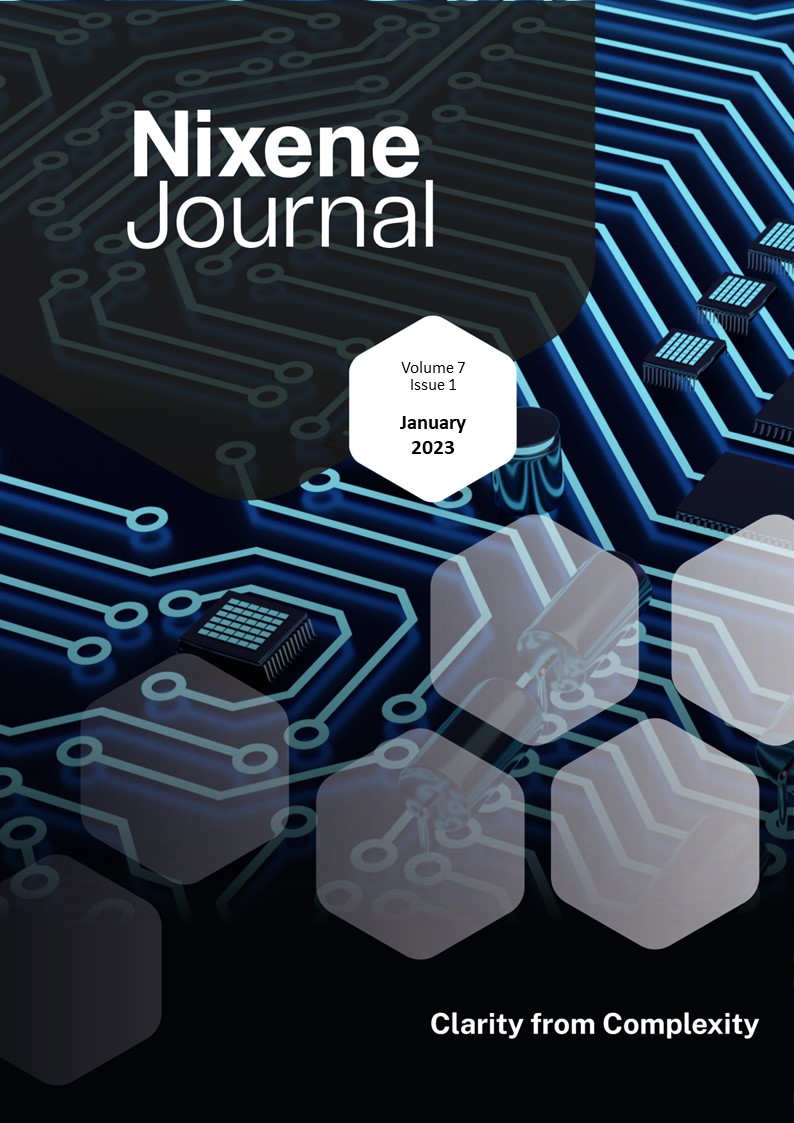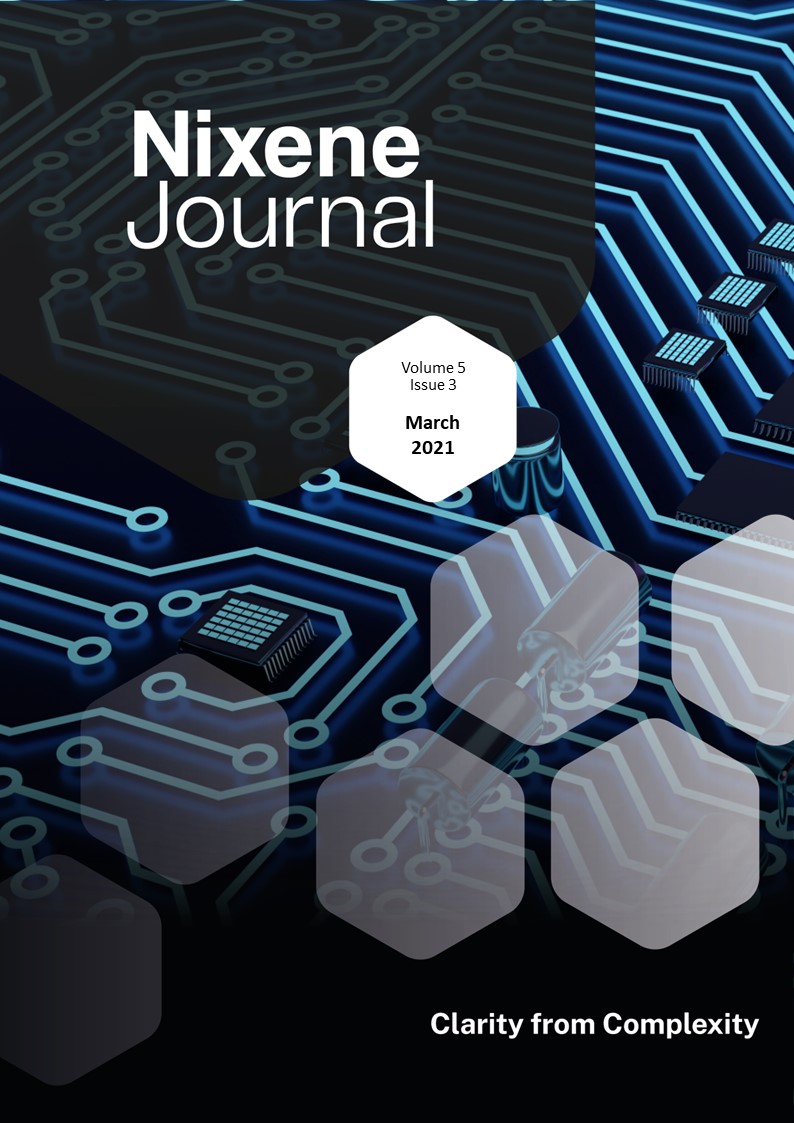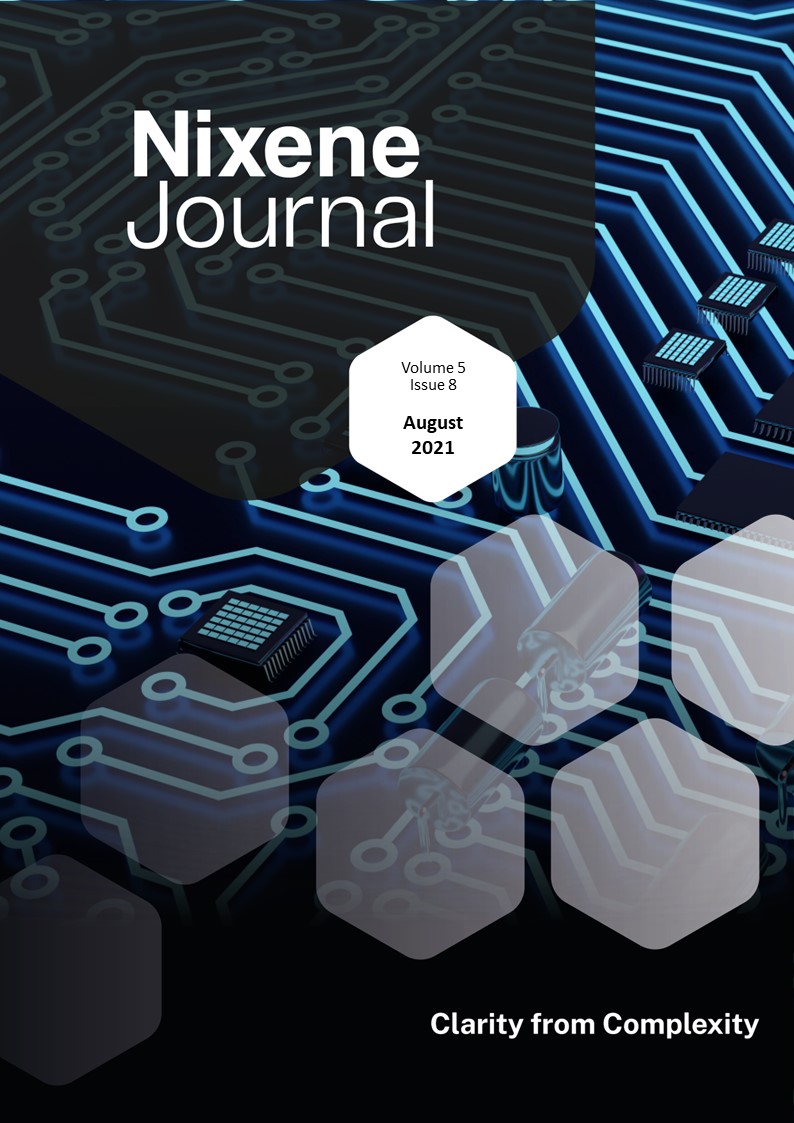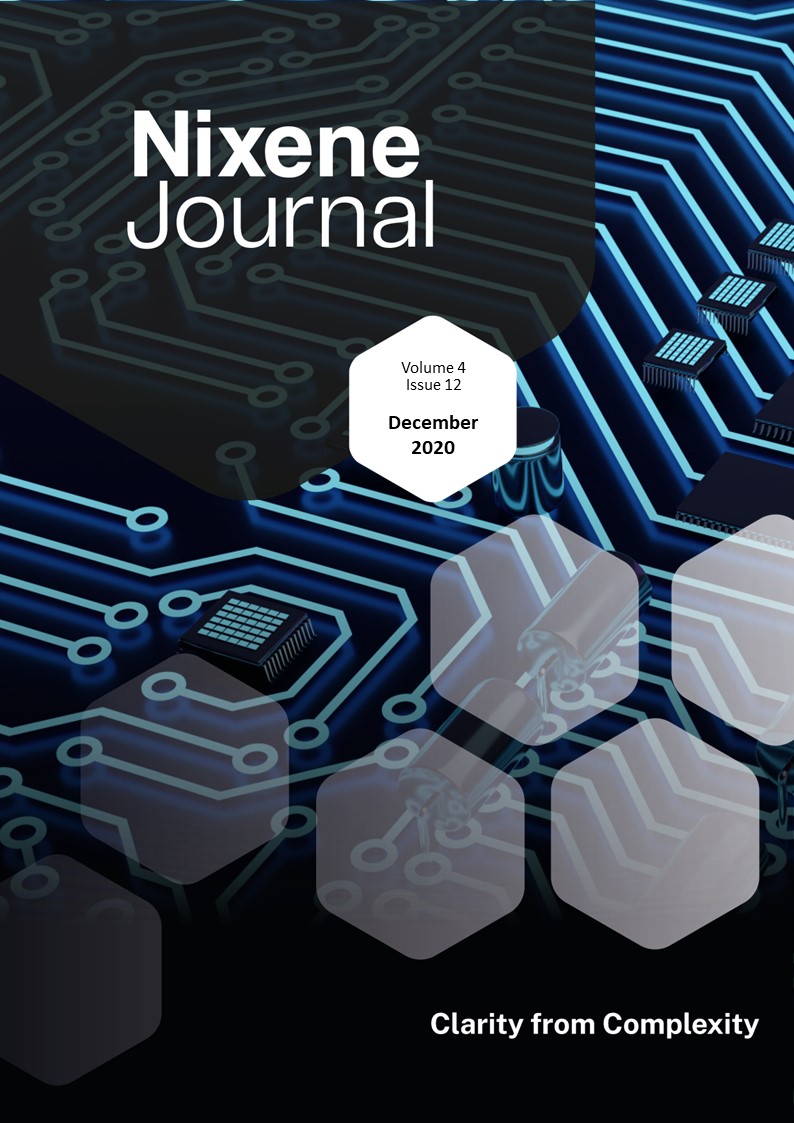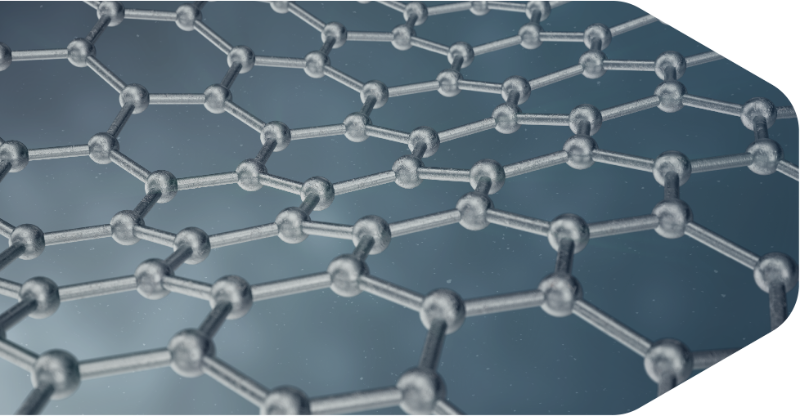Description
The big announcement this month was from James Baker. Many of you will know James personally. He is the CEO of Graphene@Manchester, the entity that includes the Graphene Engineering Innovation Centre, (GEIC, pronounced like ‘geek’).
James announced that he will be stepping back from his role as CEO after working at the University of Manchester for the past 11 years. This is not an immediate change. He will transition from the role over the next 18 months.
He will not fully retire and intends to stay close to graphene commercialisation activities around the Manchester ecosystem. He has also launched his own consulting company; you can find out more on p.28 of this issue.
One of the spin-out companies that James has been supporting at the GEIC is Vector Homes. They have formed a new joint venture company called Wull. The company makes a new type of building material from sheep’s wool that provides insulation, noise reduction and is flame retardant. This month Wull announced that it has been awarded £0.3 million of funding to develop the product. This announcement is all the more impressive when you consider that in the current global economic environment most investment activity has ground to a halt.
Also, in this issue we look at the potential for graphene to create lightweight armour. The special feature addresses the question of which would win graphene or bullets? It won’t surprise you to learn that bullets would bounce off a material made from graphene super laminate and if made thick enough it will create impenetrable armour plating against even high velocity impacts.
So far so good. We took the challenge further and posed the question, would this be good enough to protect against debris in space, specifically in Earth orbits? Getting to the answer required collaboration with an expert in these matters. You can read about our conclusions on p.9 of this issue.
In the research, we discover that a team in China has developed contact lenses that enable the wearer to see in the dark by making invisible infrared light visible. The team did not disclose exactly how they did this but piecing together other research we found one way to do this involving graphene; p.20 has the details.
And as usual, dear Reader, there is so much more to explore in yet another packed issue of the journal.
Adrian Nixon
1st June 2025

